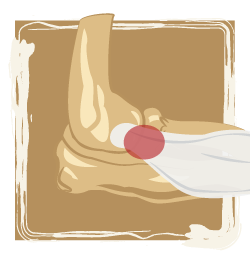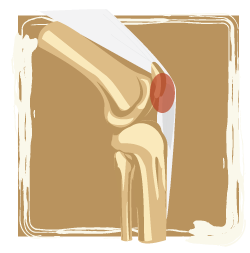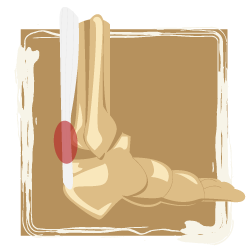Mission
The SUMMIT lab is a multi-disciplinary team striving to find effective minimally invasive treatments for common musculoskeletal tendon injuries such as tennis elbow, patellar tendinitis, Achilles tendinitis and plantar fasciitis. Using a Team Science approach to research, we incorporate innovative tools such as biomechanical sensors, special ultrasound measurements, and state-of-the-art MRI pictures to stratify disease severity and assess healing response. Our ultimate goal is to change the way we approach and treat common disabling tendon injuries so that you can return to your sport or daily lives as soon as possible.
 NFL Study
NFL Study
UW researchers, including members of the SUMMIT Lab, are part of a team that was awarded $4 million from the NFL to study hamstring injuries. The study will be using multimodal MRI imaging to better characterize hamstring injuries in athletes with the goal of improving recovery time and producing preventive measurements. The research is a continuation of prior work that used quantitative MR sequence to examine hamstring injuries in the NBA. This new study will be done with four college football teams over multiple years and aims to image 120 athletes at baseline, at injury, and then at the time they return to play. The researchers want to examine imaging markers for potential re-injury.

Peak Platelet-rich Plasma Injection Treatment for Chronic Lateral Epicondylitis (Tennis Elbow)
The primary aim of this study is to evaluate the effectiveness of platelet-rich plasma (PRP) as a treatment for chronic lateral epicondylitis (CLE), also known as “tennis elbow”.

Platelet-Rich Plasma Treatment for Jumper’s Knee
Patellar tendinopathy (PT), also known as Jumper’s knee, is a common disabling tendon injury that is highly prevalent in sports, especially amongst basketball and volleyball players. PT is especially prevalent in elite basketball players and is responsible for significant morbidity both during and after an athlete’s career. In fact, about half of elite athletes affected by PT have to quit their sport. Treatment of PT remains a challenge and conservative therapies often do not help. Since surgery may not be a good option when considering longer recovery times and return to play, a new minimally invasive treatment alternative must be considered.
Platelet-rich plasma, or PRP, is an emerging treatment option using concentrated platelets made from the patient’s own blood containing healing growth factors. Recent exponential use of PRP has been in the area of sports-related tendon overuse injuries such as PT. Currently, it has been estimated that about 100,000 elite athletes are injected with PRP annually, but the frequency of use is likely under reported. The main growth driver came from the media’s attention on well-known professional athletes reporting a quicker and more durable return to activity after PRP rather than foundational evidence-based decisions from a well-designed randomized control trial (RCT). Therefore, we propose a double-blinded RCT to investigate if PRP is effective for treating PT compared to dry needling (without concentrated healing growth factors) and placebo control groups. Positive outcomes from this study would establish an effective non-surgical treatment option for PT and demonstrate that healing changes of the tendon can be followed using new MRI and ultrasound imaging exams.
 Platelet-Rich Plasma for Achilles Tendinitis – Closed to Enrollment
Platelet-Rich Plasma for Achilles Tendinitis – Closed to Enrollment
Achilles tendinopathy (AT) is a common debilitating overuse injury characterized as a degenerative condition resulting from repetitive microtrauma seen in a wide spectrum of people, from the athlete to the middle-aged sedentary individual. To date, there is no consensus nonsurgical treatment for chronic AT and 25-45% of patients eventually require surgery. A promising treatment for overuse injury such as AT called platelet rich plasma (PRP) uses autologous platelets to increase the concentration of endogenous growth factors to promote healing on the cellular level, thereby improving pain and function. Novel ultrasound-based elastography technique called shear wave imaging (SWI) can provide quantitative measurements of tissue stiffness. If validated, US elastographic assessment will be an indispensable tool for quantitative measurement of soft tissue pathology and a low cost method to monitor healing changes and potentially guide therapy. We predict the clinical utility of this one-of-a-kind, non-invasive assessment of biological tissues to be very widespread. Therefore, the purpose of our pilot study is to evaluate SWI as an objective outcome measures for PRP therapy for chronic AT. We hypothesize that PRP treatment will decrease pain and normalize these radiologic assessments over time. This randomized controlled pilot study will compare self-reported AT pain and function with SWI and conventional US outcomes in 20 adult subjects (10 in each of 2 groups) with moderate-to-severe AT, refractory to standard of care treatment, over 24-weeks. Group 1 (PRP) will receive a single injection of PRP. Group 2 (control) will receive no intervention. Self-reported clinical and SWI and conventional US assessments will be obtained prior to injection at weeks 0 (baseline), 12, and 24.